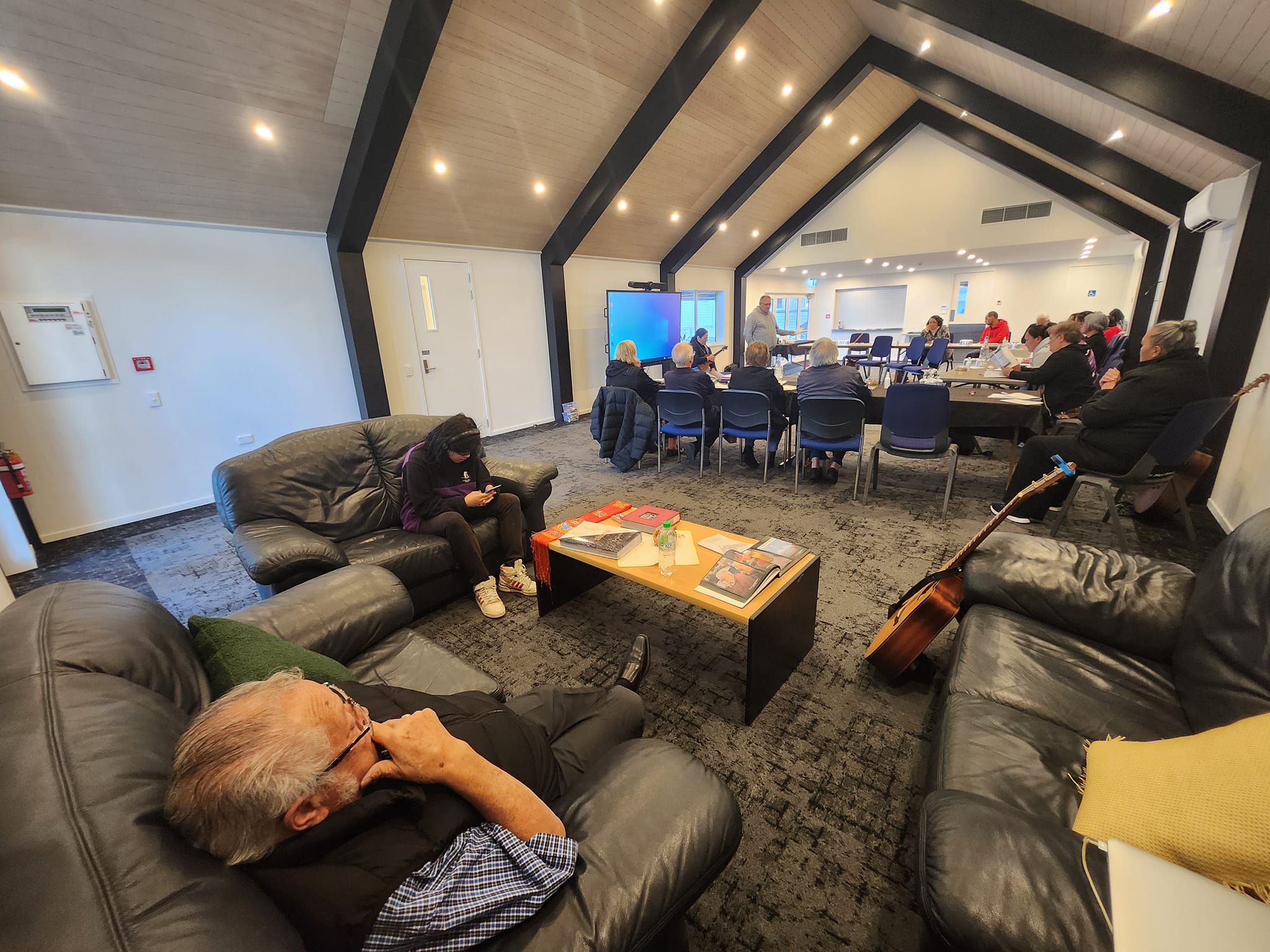It will be early to mid 2026 before an Electoral College to elect a new Bishop will be called in Te Hui Amorangi o Te Waipounamu. Bishop Richard passed away suddenly earlier this year, two weeks before the very first meeting of the new Commission on Episcopal Leadership renamed Amorangi ki Mua the body tasked with reviewing the appointment, ministry, support, relationships and tenure of a Māori Anglican Bishop.
A two-year timeframe allows time to grieve the deep loss of Bishop Richard Wallace and for an unhurried recruitment to take place. “We want to let the commission do its work around selection specifically and other key parts of a Bishops Ministry,” Archdeacon Hirini Kaa said in a presentation to those attending Te Rūnanga Whāiti.
“The commission will bring its recommendations, possibly a canon, a set of rules around election.” “It was Sir Eddie Durie who advised against using canons as tikanga Māori, therefore we need to use canons cautiously and sparingly.”
In a communication to Te Hui Amorangi o Te Waipounamu and the wider church the Archbishops had appointed Archdeacon Susan as Commissary responsible for non-episcopal oversight of the Amorangi. With any episcopal matters dealt with by Archbishop Don.
The roadmap from the commission’s inaugural meeting recommends taking two years before convening Te Waipounamu Electoral Synod. It was voted unanimously to adopt a timeline that would allow the commission to undertake its work around a process to select a bishop.
Its recommendations will then be taken to Te Rūnanganui in September 2025 with an eye towards the Electoral Synod convening in the first quarter of 2026.
“It does look a long way away but there’s a lot of kōrero to be had between now and then,” said Hirini, adding that even without a sudden loss, 12-18 months would be a normal timeframe between a position becoming vacant and the subsequent election. With the commission having started its work, there would be a good process used for this election and any elections going forward.
Bishop Wallace’s daughter, Archdeacon Susan Wallace, is a member of both the Commission and Te Rūnanga Whāiti and was asked for her view on the two-year wait. “I think there will be some that will be agreeable with it and some that won’t. One of the differences here is that he (Bishop Richard) didn’t retire. He died in service. We need time to grieve and to settle,” Susan said. “When we go through the unveiling process in 12 months’ time, it will give us a bit of space to mourn and grieve while still looking forward to seeing what the pathway is.
And then another year to come into Te Ao Mārama and get the lay of the land before we go through
the process. From a tikanga perspective, for us it’s the right thing.” Susan said the current regime wasn’t mana-enhancing for those who put themselves forward and weren’t selected. “There’s got to be a better way of doing that than our current process.”
Archbishop Don Tamihere said his fellow Archbishops had shown interest in the work of the commission there could be shared learnings. He said in other parts of the Anglican communion, two years was standard.
“But they also have more developed processes in those spaces. There’s an opportunity for us to at least have the wananga because we don’t know what the commission is going to find and recommend to us. It is a timely opportunity to do it.”
